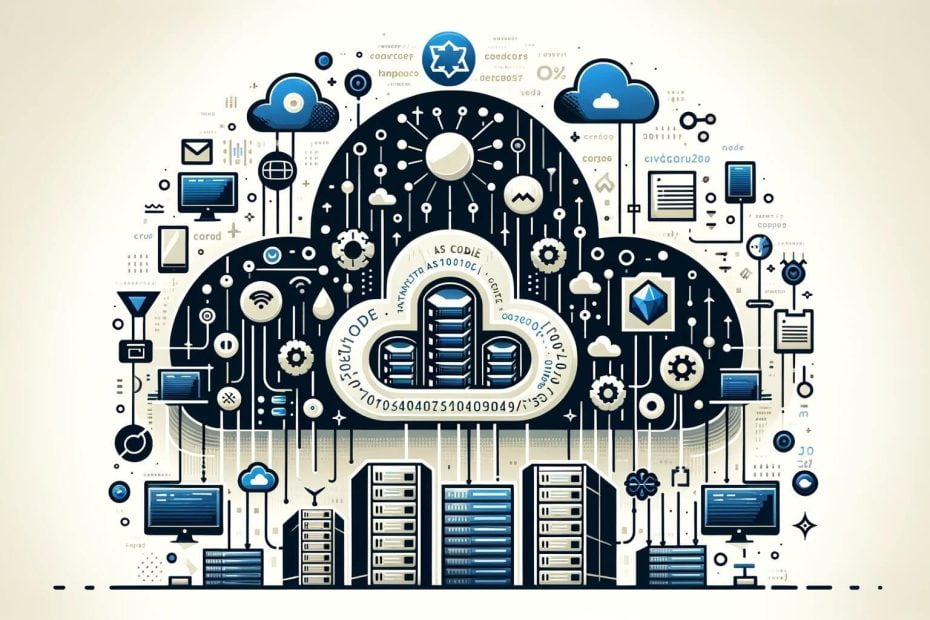Terraform is a powerful configuration management and orchestration tool from HashiCorp. It enables you to declaratively specify the infrastructure you need and then automatically manage the implementation of that infrastructure. Terraform can be used to manage both public clouds (such as Amazon Web Services, Azure, and Google Cloud Platform) and private clouds (such as OpenStack, VMware vSphere, and bare-metal servers). In this blog post, we will introduce you to Terraform and show you how to get started using it. We will also describe some of the key features of Terraform that make it such a compelling choice for infrastructure management. Finally, we will provide some tips on how to best use Terraform in your organization or business. So without further ado, let us dive into it.
Unlock the future of intelligent applications with our cutting-edge Generative AI integration services!
What Is Terraform?
Terraform is a great resource used to version, change, and build infrastructures in a safe and efficient manner. Terraform smoothly manages custom in-house systems and all kinds of service providers. Terraform looks up to configuration files to ascertain the components required to manage your data center or a single application. Before it executes its plan to create an infrastructure, it describes it in detail along with the path it plans to take. As the execution of the plan progresses, Terraform determines the changes and modifies its initial plan as well as makes additions to it before applying the enhancements.
Benefits of Using Terraform
- Terraform allows you to easily provision and manage cloud infrastructure, making it an ideal tool for DevOps and system administrators.
- Terraform’s declarative syntax ensures that configurations are easy to understand and maintain, while its support for a wide range of providers makes it perfect for use in multi-cloud environments.
- Thanks to its efficient resource management capabilities, Terraform can help you save money on your cloud infrastructure costs.
- Terraform’s modular design makes it easy to extend and customize your infrastructure as your needs change over time.
- Terraform’s support for multiple provisioning modes (e.g., blue/green deployments) makes it easy to implement and manage complex infrastructure deployments.
- erraform’s built-in tools for monitoring and logging make it easy to keep track of your infrastructure’s health and performance.
- Terraform’s extensibility makes it easy to integrate with other tools and services, making it a perfect fit for use in automated workflows.
- Terraform’s innovative approach to infrastructure as code makes it an indispensable tool for anyone looking to manage their cloud infrastructure in a more efficient and effective way.
Terraform Lifecycle
Terraform has two distinct parts: the Terraform Core and the Terraform Provider. The Terraform Core is responsible for managing the lifecycle of your infrastructure, while the Terraform Provider is responsible for provisioning and configuring the resources within your infrastructure.
In order to manage your infrastructure effectively, it is important to understand the lifecycle of a Terraform resource. A typical Terraform resource has four distinct phases: Create, Read, Update, and Delete (CRUD).
Creating a resource involves initializing the resource and setting its basic properties. This is typically done when you first create a new resource or when you import an existing resource into your Terraform configuration.
Reading a resource involves retrieving information about the resource, such as its current state or properties. This is typically done when you want to view the current state of your infrastructure or when you want to debug a Terraform configuration.
Updating a resource involves changing the properties of an existing resource. This is typically done when you want to change the configuration of an existing resource or when you want to apply a new template to an existing resource.
Deleting a resource involves removing the resource from your Terraform configuration. This is typically done when you want to remove an unused resource or when you want to destroy an entire infrastructure.
The Terraform Core provides several lifecycle hooks that allow you to customize the behavior of your resources during each phase of their lifecycle. These hooks can be used to perform tasks such as validating resource configuration, initializing resources, or destroying resources.
The Terraform Provider API also provides several lifecycle hooks that allow you to customize the behavior of your resources during each phase of their lifecycle. These hooks can be used to perform tasks such as provisioning resources, configuring resources, or destroying resources.
You can use the Terraform Core and Terraform Provider APIs together to create custom resource types that behave exactly how you want them to. By understanding the lifecycle of a Terraform resource, you can build a powerful infrastructure that is easy to manage and maintain.
Terraform Core Concepts
Infrastructure is composed of resources such as physical machines, VMs, network switches, containers, and more. Terraform describes infrastructure in code and creates resources in a provider (like AWS) according to that code.
The core concepts of Terraform are:
- Variables
- Provider
- Module
- State
- Resources
- Data source
- Plan
- Apply
Terraform is a powerful tool that can be used to manage cloud infrastructure. It allows you to declare the state of your infrastructure and then automatically creates or updates the resources needed to achieve that state. In this article, we’ve introduced you to Terraform and show you how it works. We’ve also given you some tips on how to get started using Terraform in your own projects. If you want to learn more about Terraform, or if you need help getting started with it, please don’t hesitate to contact us. Cloud Computing Technologies has years of experience working with Terraform and other cloud management tools, and we would be happy to help you get up and running with this powerful technology.
Further blogs within this All You Need To Know About Terraform category.




